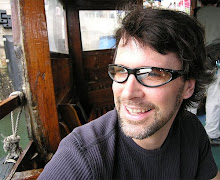
Skulls arranged into the shape of Cambodia at Tuol SlengAfter twenty years, scattered bits of clothing and splintered bones still lay embedded in the paths between the graves. Pol Pot, who sowed the seeds of these desolate fields I was standing in, haunts Cambodia despite his death over twelve years ago. I had come in large part because of him. Maybe I could gain some insight into the bitter hatred that continues to plague the world with genocidal warfare. But the more I saw, the less I understood. Perhaps genocide, the ultimate atrocity, remains unfathomable to those fortunate enough to have avoided its terror.
 In spite, or because of including torture prisons among its main tourist destinations and claiming a former Khmer Rouge cadre - Hun Sen - as its Prime Minister, Cambodia remains a popular travel destination. Still, the brutal legacy of the Khmer Rouge lingers and as I discovered, more is demanded of the visitor to Cambodia than to Thailand or even Vietnam. Unable to believe that their fellow countrymen could inflict such suffering on their own people many have denied that the Khmer Rouge committed any atrocities. Others still wrestle with the loss of loved ones. I found myself navigating a path between these two extremities as though I were walking through a minefield. One slip of the tongue could set off an explosion of contempt.
In spite, or because of including torture prisons among its main tourist destinations and claiming a former Khmer Rouge cadre - Hun Sen - as its Prime Minister, Cambodia remains a popular travel destination. Still, the brutal legacy of the Khmer Rouge lingers and as I discovered, more is demanded of the visitor to Cambodia than to Thailand or even Vietnam. Unable to believe that their fellow countrymen could inflict such suffering on their own people many have denied that the Khmer Rouge committed any atrocities. Others still wrestle with the loss of loved ones. I found myself navigating a path between these two extremities as though I were walking through a minefield. One slip of the tongue could set off an explosion of contempt.  Phnom Pehn, once referred to as "the pearl of Indochine" is a tattered, vibrant capital. Amid its ragged facade barbers set up shop along the sidewalks where they shave and trim customers in mirrors propped up against rubble or discarded scooter parts. The dirt and cement roads, riddled with potholes, buzz with cyclos and scooters recklessly dodging one another amid the city's guerrilla-like domesticity. Glimpses of French colonial architecture poke out here and there dilapidated and ruined alongside the modern-drabness of the later Soviet-era buildings.
Phnom Pehn, once referred to as "the pearl of Indochine" is a tattered, vibrant capital. Amid its ragged facade barbers set up shop along the sidewalks where they shave and trim customers in mirrors propped up against rubble or discarded scooter parts. The dirt and cement roads, riddled with potholes, buzz with cyclos and scooters recklessly dodging one another amid the city's guerrilla-like domesticity. Glimpses of French colonial architecture poke out here and there dilapidated and ruined alongside the modern-drabness of the later Soviet-era buildings. 
"While Getting Lashes or Electrification You Must Not Cry At All"The Tuol Sleng Genocide Prison, where thousands of prisoners where brought to begin their odyssey of death, is located near the center of Phnom Penh. Between April 1975 and December 1978 over one third of Cambodia's population, or two million people, were wiped out. This former high school was turned into one of the most brutal extermination camps outside of Nazi Germany. Within its walls over 17,000 people were tortured and murdered. My English speaking guide was a twenty-eight year old woman who had lost her father to the Khmer Rouge. We went from classroom to classroom and saw the rusted chains, pliers, and barbed wire preserved as they were left on the day the prison was liberated by the Vietnamese in 1979.

Killing Fields of Choeung EkThe Khmer Rouge kept impeccable records of their victims. Each person was photographed and today a few hundred line the walls like a page from some macabre school yearbook. Looking into the photographs I could see, as the Nicaraguan poet Ernesto Cardenal wrote, that "they weren't looking at the camera, but at death / and the torture before death."
Glancing at my ticket as I left the museum, I noticed it read, "The Kingdoom of Cambodia". Although an attempt to white out one of the o's had been made it could not hide the grim irony of the message.
The Killing Fields of Choeung Ek are a twenty-minute scooter ride south from the city. After Tuol Sleng, the corpses were brought here to be heaped into mass, unmarked graves. At the entrance, in the middle of a gravel lot, stands the Memorial Stupa built in 1988 for the victims. Inside are shelves upon shelves of dry, white skulls arranged in rows behind plexi-glass panels. If someone arrived alive they were bludgeoned to death with shovels to save bullets.
As I pulled in with my driver, children were playing around the fenced in complex and families worked in the surrounding fields. The former killing fields that had consumed over 8000 bodies had been, like much of the Khmer Rouge's legacy, absorbed by the locals but not forgotten.









No comments:
Post a Comment